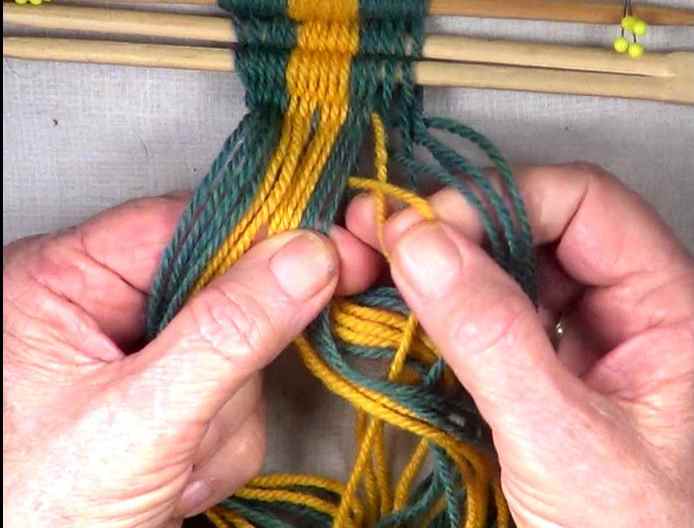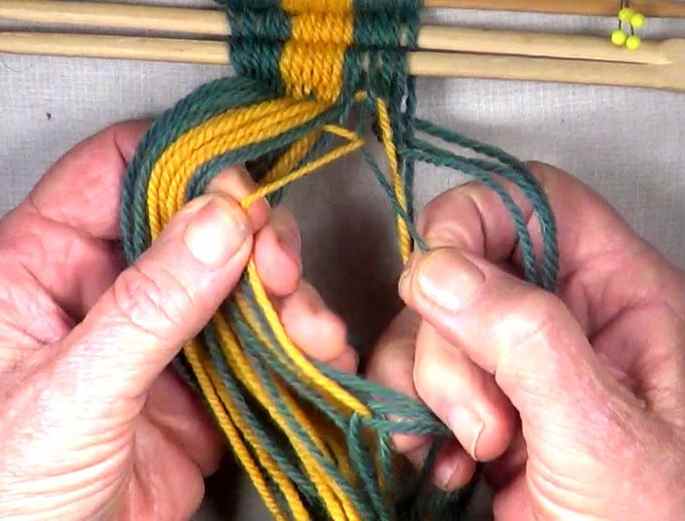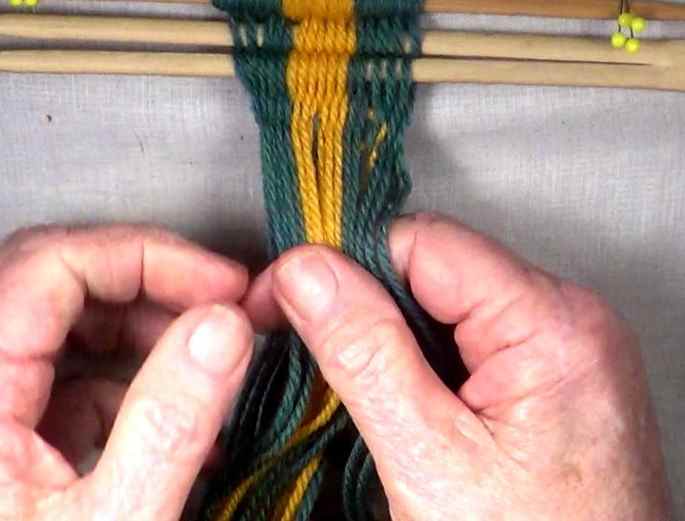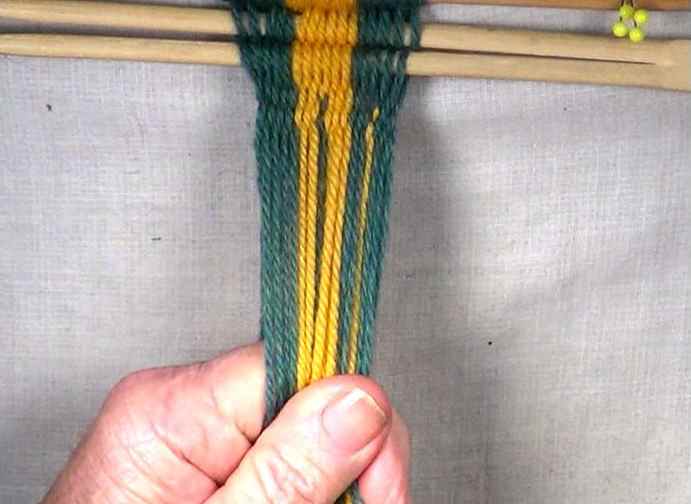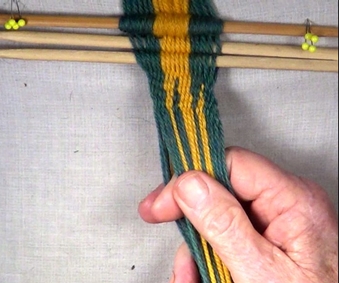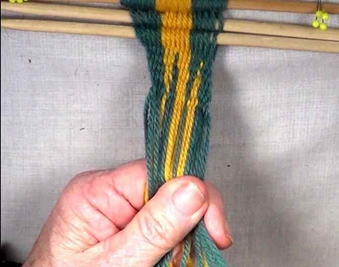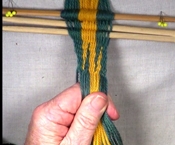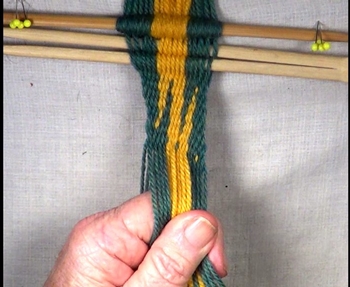|
|
|
(Worked left to right.) ( Even numbered lightning warp strand in top layer of the shed.) |
|
|
Row 1: Select and pass [part 1] weft strand through [part 1] shed.
The first background color warp strand on the left hand side becomes the Row 1 [part 1] weft strand. Then pass the [part 1] weft strand through the shed to the the sixth lightning color warp strand. |
[figure-5][click here to see video]
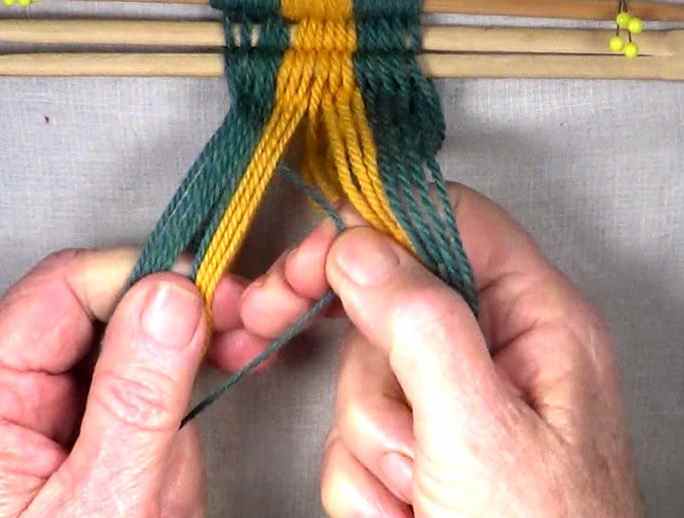
|
| Top of page | Next: figure 6 |
Row 1: Interlock the [part 1] weft strand and the 6th lightning color warp strand.
|
[figure-6] [click here to see video]
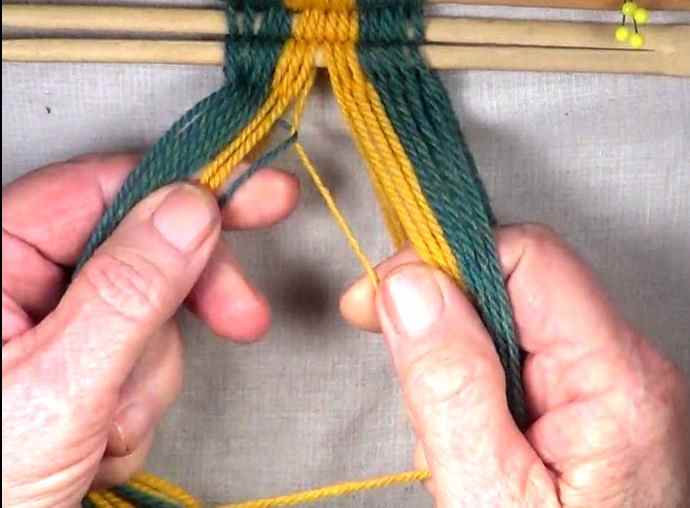
|
| Previous: figure 5 | Next: figure 7 |
Row 1: Pass the [part 2] weft strand through the Row 1 [part 2] shed.
Then pass the [part 2] weft strand through the Row 1 [part 2] shed to the sixth background color warp strand. |
[figure-7] [click here to see video]
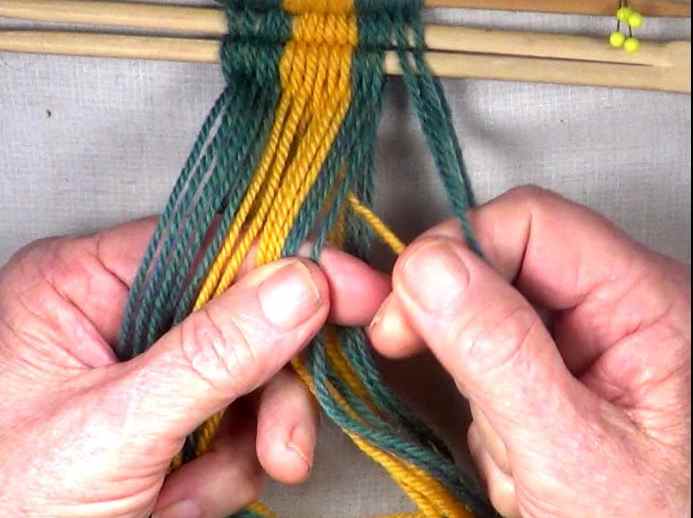
|
| Previous: figure 6 | Next: figure 8 |
|
Row 1: Interlock the [part 2] weft strand and the sixth background color warp strand.
|
[figure-8] [click here to see video]
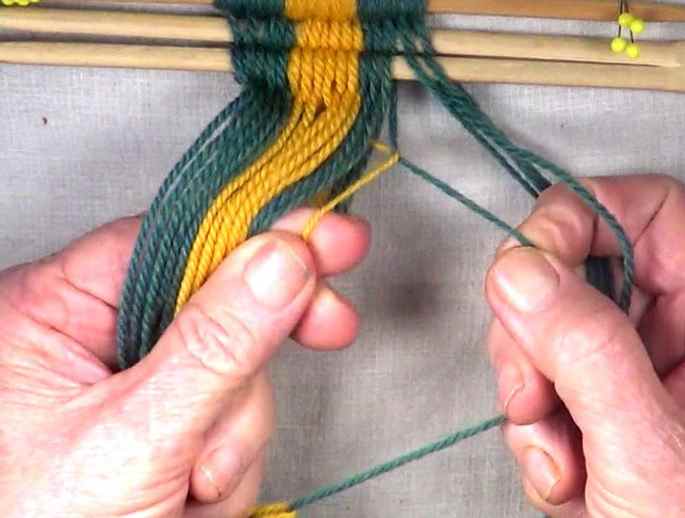
|
| Previous: figure 7 | Next: figure 9 |
|
Row 1: Pass the [part 3] weft strand through the Row 1 [part 3] shed.
Then pass the [part 3] weft strand through the Row 1 [part 3] shed to the right hand edge of the work piece. |
[figure-9] [click here to see video]
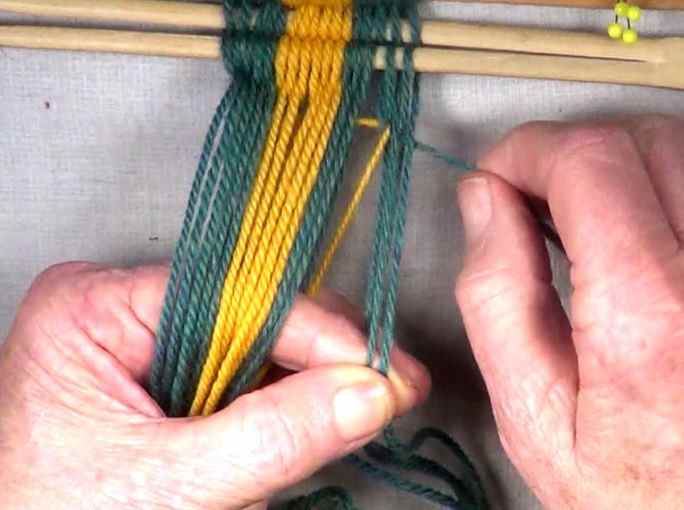
|
| Previous: figure 8 | Next: figure 10 |
|
Row 1: Secure the [part 3] weft strand.
Then transfer the Row 1 shed to the index figer of the right hand. |
[figure-10] [click here to see video]

|
| Previous: figure 9 | Next: figure 11 |
|
Row 1: Reverse the Row 1 shed and set the weave.
|
[figure-11] [click here to see video]
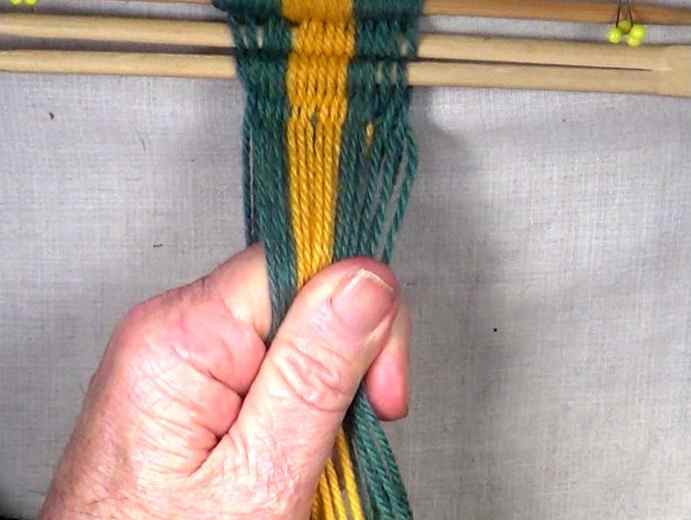
|
| Previous: figure 10 | Next: figure 12 |


